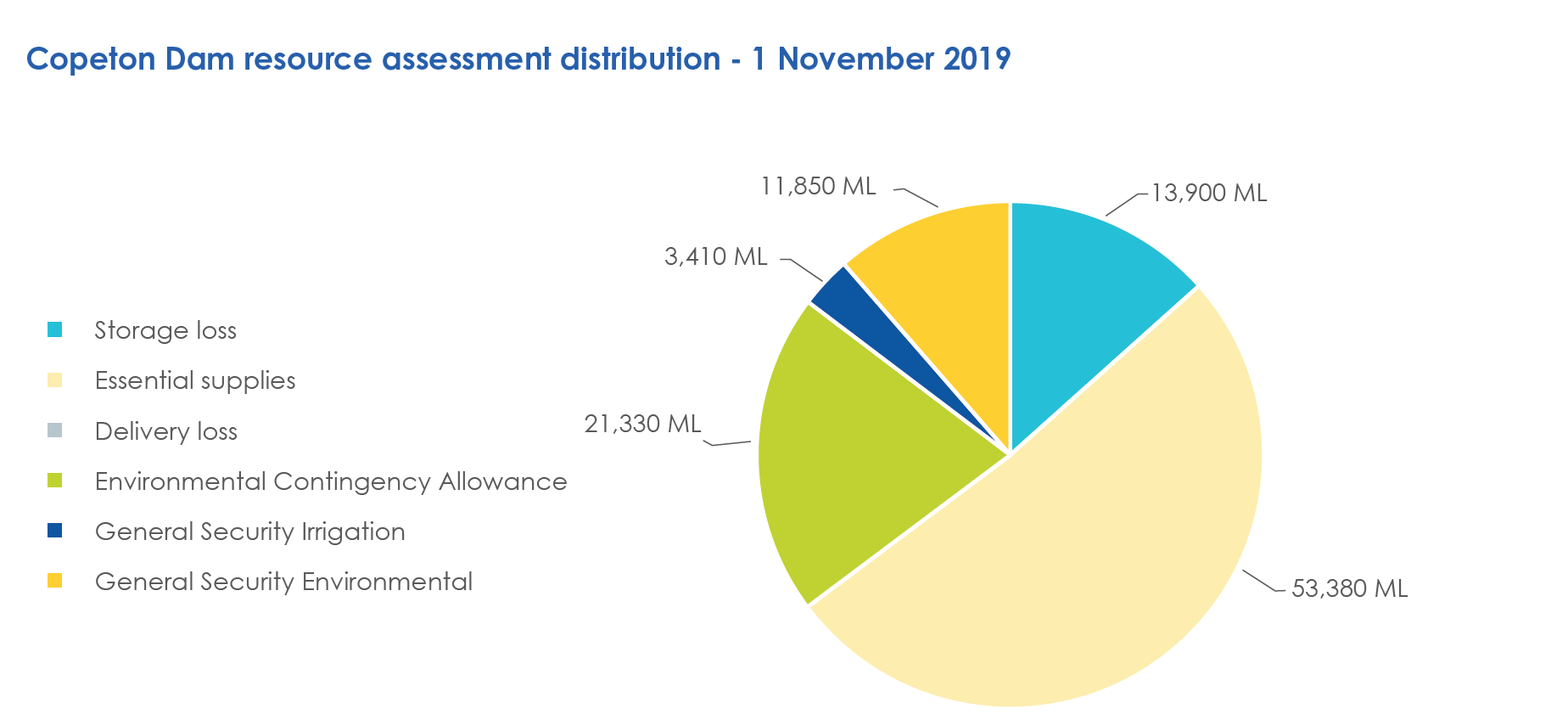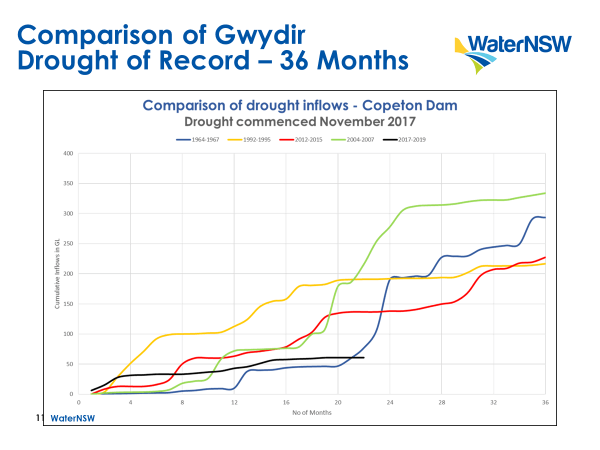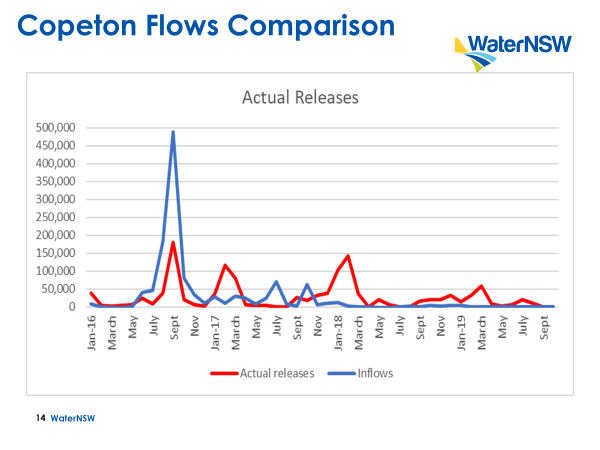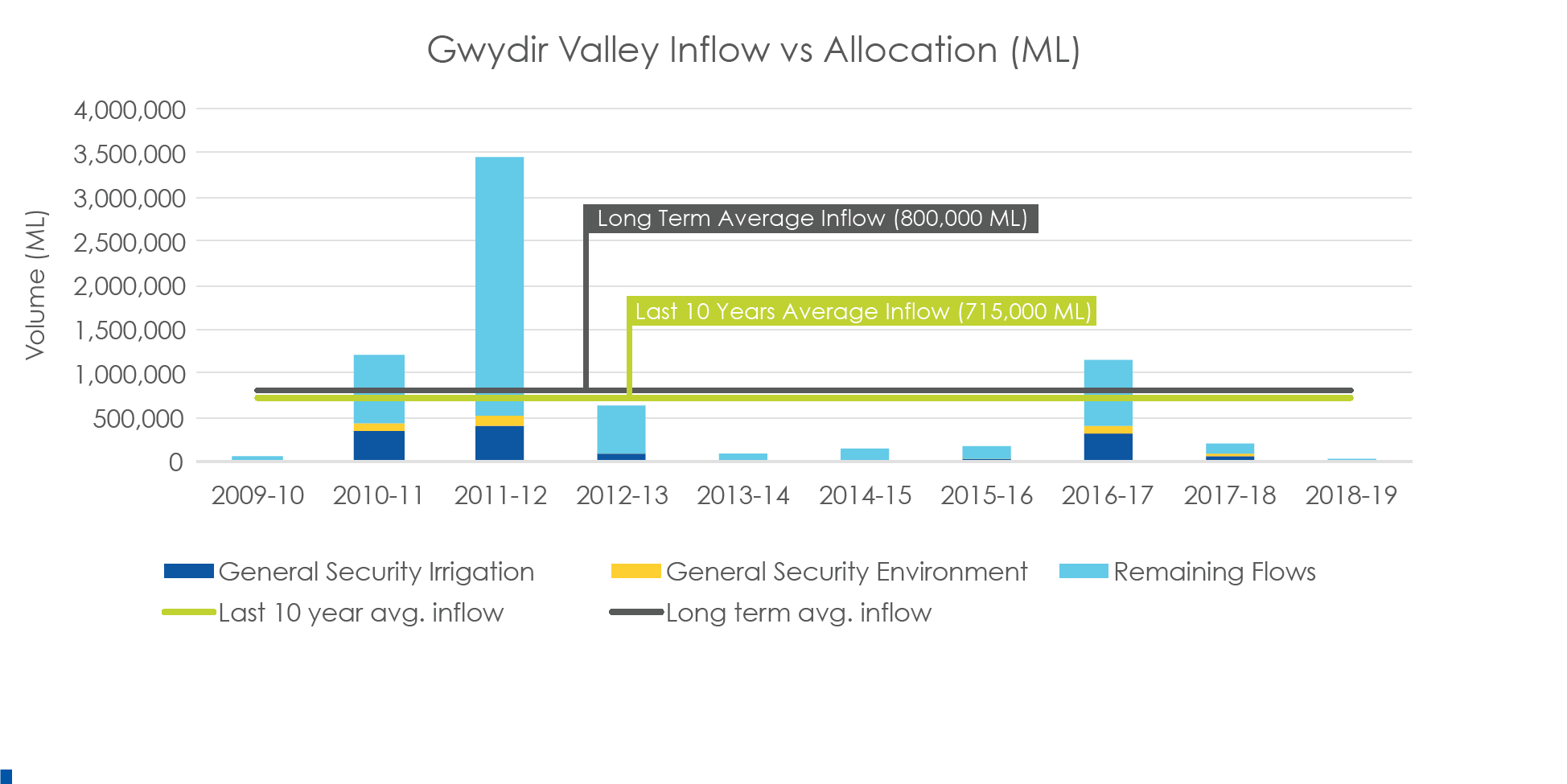The Gwydir Valley remains in Drought Stage 3, with a review of category to be considered following deliveries over the summer and in the lead up to starting allocations in July 2020. Deliveries are being maintained but via a bulk delivery.
WaterNSW will not be delivering a complete S&D delivery and Weemelah will not be receiving town water supply delivery again this year, unless conditions improve.
High security users are on bulk water delivery strategies and general security customer are dam wall debited. Currently, only environmental water users are electing to deliver carry over allocations as part of their critical refuge flows - see environmental water update.
Copeton Dam is with 122,830 ML but falling with deliveries. Currently the total commitment is higher than the available resource and the shortfall is about 57,500 ML.

The available resource is distributed amongst, essential supplies including local water utilities and stock and domestic users, as well as
high security totalling 53,380ML with storage losses accounting for 13,900ML and remaining carryover allocations to environmental water
users (21,330ML plus 11,850ML) and general security irrigation (3,410ML).
Before any allocations, essential supplies are required to be secured up to two-years in advance (totalling a target of 90,000ML), currently resources are below this target.

The inflows for last the 30-months are the lowest on record, with the 36-month inflow sequence below the previous drought on record in 1992-95.
The 24-month inflow sequence is marginally better than the previous worst drought on record (1918-20) but only a few GLs.
When looking over a 12-month period, the last 12-months have seen only 19,100 ML inflows occurring, which is almost double as much as the lowest record inflow of 10,500 ML (1964-67).

Analysis by WaterNSW using a zero inflow sequence, suggests that resources can be maintained until August 2021 with current bulk water strategies. Considering other efficiency measures will extend this timeframe.
Current 10-year inflows are 11% less than long-term average, equalling 715,000ML. This trend is consistent for the whole northern basin.
Allocations to users other than essential supplies, over this period have occurred in half of the years. In the majority of these years, actual inflows were greater than the long-term and current 10-year average.
Usage over this period has occurred after allocations, highlighting the value of given carryover provisions. Interestingly, Copeton Dam deliveries have been maintaining river flows in the region now for October 2018, when natural inflows ceased. These have been a combination of essential supply deliveries, some irrigation and environmental water releases.


